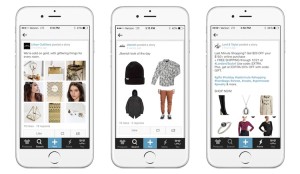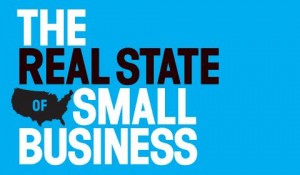
Managing your ecommerce presence is an ever-changing process. Studies prove that having your own ecommerce site increases revenue by at least 28%, but simply launching and maintaining your site often isn’t enough to drive true scale and market recognition.
The smartest brands take advantage of the entire digital ecosystem, ensuring their products are in front of as many consumers as possible at any given point in time. This marketing method is often referred to as omnichannel, meaning no matter if you’re selling in store, online or both, your products are available for purchase wherever you customer is looking for them.
The smartest brands take advantage of the entire digital ecosystem, ensuring their products are in front of as many consumers as possible at any given point in time.
This can be done in a number of ways, and social media platforms are an easy way to drum up business online. Likely, your brand is already utilizing responsive design as well as channels including Facebook, Pinterest and Google Shopping to serve up product recommendations and brand updates to both existing and potential new customers. But don’t discredit the new guys in the game.
New social shopping platforms like Fancy and Wanelo have been gaining mass attention and press for their high conversion rates and brand building capabilities. Wanelo, for example, has more than 11 million active users, and brands utilizing the platform report more than 4x increased engagement and conversions than similar offerings on platforms like Facebook or Pinterest. In fact, the more established social platforms are looking to these innovative startups to enhance their own advertising offerings.
New social shopping platforms like Fancy and Wanelo have been gaining mass attention and press for their high conversion rates and brand building capabilities.
If you want your brand to be omnichannel, then you need to be present on the up-and-coming social selling sites. Below, we catch up with Karen To, head of communications at Wanelo, to talk about what differentiates Wanelo and the brands that utilize the platform. Karen offers tips and straight-forward steps on how to get your brand on the site and grow a loyal shopping audience ASAP.
How does Wanelo work?
The best way to describe Wanelo (“wah-nee-loh,” from Want, Need, Love) is a social marketplace with 350,000 stores and 20 million products, all shoppable from one place.
For shoppers, it’s a way to discover and buy products from anywhere in the world. For stores, Wanelo is a place to market and sell products to millions of users who come to do nothing but shop.
What’s the benefit for ecommerce stores using Wanelo?

First and foremost, small businesses on Wanelo talk about its value in leveling the playing field for them with big brands. Many of these stores were early adopters of Wanelo and have built very significant followings –– some with as much or more visibility than some of the top established brands using the platform. Without Wanelo, these small businesses wouldn’t be able to compete for the same attention that bigger players with large marketing budgets can easily get.
Secondly, small businesses on Wanelo are seeing increased traffic and conversions. We recently launched “Buy on Wanelo” to allow stores to sell their products directly from Wanelo’s app instead of redirecting the shopper to the store’s ecommerce site to complete the purchase. To participate, all stores need to do is submit their product feed to let us sync with their inventory and enable them for direct purchase on Wanelo.
Most importantly, small business who are enabled to sell directly on Wanelo report seeing high product engagement and conversions that are 3-6x higher than industry standards.
What type of products do best on the platform?

Wanelo’s demographic is majority female and 50 percent are ages 18-24, so products that do well tend to cater to that audience. For example, women’s and men’s apparel and accessories, home decor and gadgets are categories that typically perform well on Wanelo, but you’ll also find shops with unique products like ceramic iphone charging docks that double as a succulent planters, which also sell quite well.
What is the market reach availability for an ecommerce store on Wanelo?
Wanelo last announced 11 million users in August 2013, and it’s important to note that these users are coming to the platform with intent to purchase. They are on Wanelo to do some serious shopping. Our users spend an average of 50 minutes per day on Wanelo browsing and buying, so there’s a huge opportunity for stores to capitalize on that engagement.
Are there any particular success stories from small businesses on Wanelo?
A good example would be Azalea and Welcome Stranger, two boutiques based in San Francisco, both owned by Catherine Chow and Corina Nurimba. They started the women’s clothing boutique Azalea in 2002 as recent college graduates, and in 2010 launched their men’s store, Welcome Stranger.
They first joined Wanelo in late 2014 and immediately noticed much more activity and interaction on Wanelo than all of the other major social networks combined.
“Wanelo’s community of users who want to discover and buy is extremely powerful for a growing brand like ours,” said Eli Shkurkin, head of digital for Azalea and Welcome Stranger. “The barrier to succeed is low –– you just show up, be active and watch a community of shoppers grow around your brand.”
Their team started being active on the platform and made the decision to integrate both Azalea and Welcome Stranger’s product data feeds, enabling them to sell their products directly on Wanelo. After just two months of being active on the platform, Azalea grew to 44,000 followers and reported high traffic and conversions that surpassed Facebook by 4x, making Wanelo their highest converting platform by far.
What are any brand’s first steps to best utilizing Wanelo?
The top three things stores should do to get the best results on Wanelo are:
- Claim their store page
- Integrate their product feed to sell on Wanelo
- Add the Wanelo Save Button
 Here’s how and why:
Here’s how and why:
1) Claim their store page: Once a store claims its store page on Wanelo, we verify them as the store owner so they can start managing their page and communicating with followers. Every store page can be customized in the store’s settings to update it with information about their business, their store logo and link to their ecommerce site.
2) Integrate their product feed to sell on Wanelo: In order for shoppers to make a buying decision, they need to have all the right product information in front of them. That’s why it’s so important for us to make sure all stores on Wanelo show accurate product information and pricing, and to accomplish that, we encourage stores to integrate their product feeds to let us sync with their inventory.
3) Add the Wanelo save button to their product pages: Similar to the Facebook and Twitter share buttons, the Wanelo Save Button can be easily added to a store’s ecommerce site with just a few lines of code. Adding the Wanelo button to product pages allows customers browsing on your site to save products they like to Wanelo with the click of a button, thus distributing those products to their followers on Wanelo and exposing the store to thousands of potential new customers. The Wanelo Save Button is live on hundreds of ecommerce sites and is known to increase Wanelo-driven revenue by 100-300%.
And once a brand in on the platform, what are the best practices for getting the most out of Wanelo?
Stores can always refer to our Best Practices for Stores on Wanelo, but below are the six main practices to help small businesses to get the most out of Wanelo:

1) Curate collections: Curating collections is how stores merchandise their products on Wanelo and help shoppers find what they’re looking for. Stores can organize collections by style, category, season, color or any other way that aligns with their brand. For example, see how Bigcommerce shop AKIRA curates their collections.
2) Post stories: Brands can inject their editorial voice into Wanelo by creating stories. This feature lets stores combine up to nine products along with text and hyperlinks to tell a narrative to build looks, announce sales and host contests. Stores can post stories using the POST+ link on Wanelo.com and the “+” button on the mobile app, and they can be easily shared to Facebook, Twitter or Instagram.
3) Comment on product with hashtags: Stores can comment on their own products with hashtags to help them get discovered in search on Wanelo. When used correctly, hashtags associated with a brand’s products, collections or categories can improve Wanelo SEO for brands by getting their products in front of consumers who are using and/or searching for those hashtags. For example, a pair of Nordstrom socks titled “LEMON Winter Flurries Slipper Socks” shows up in search results for #Fall and #Knit because Nordstrom left a comment on the product using those hashtags.
4) Host a contest: Stores can increase engagement around their products by running contests on Wanelo. Some examples of ways brands host contests include encouraging users to post products from their store using a certain #hashtag or having them create themed collections or stories to submit for review.
5) Monitor trending products: Any store owner on Wanelo can see which of their products are most popular at any given period of time by looking at the Trending tab on their store page. Brands can use this tab to gain insight into which of their products are gaining popularity, and can even integrate their trending products into their ecommerce site by clicking the “Embed this store’s trending products” link on web.
6) Promote their Wanelo store page: Stores should promote their Wanelo store page outside of Wanelo in email newsletters, website footers, in-store signage and on their other social profiles. Make sure your customers know you’re on Wanelo and how they can follow you.
Have any questions or concerns in getting started on Wanelo? Leave them in the comments below and we’ll work to help you start selling more online.
(292)
Report Post








